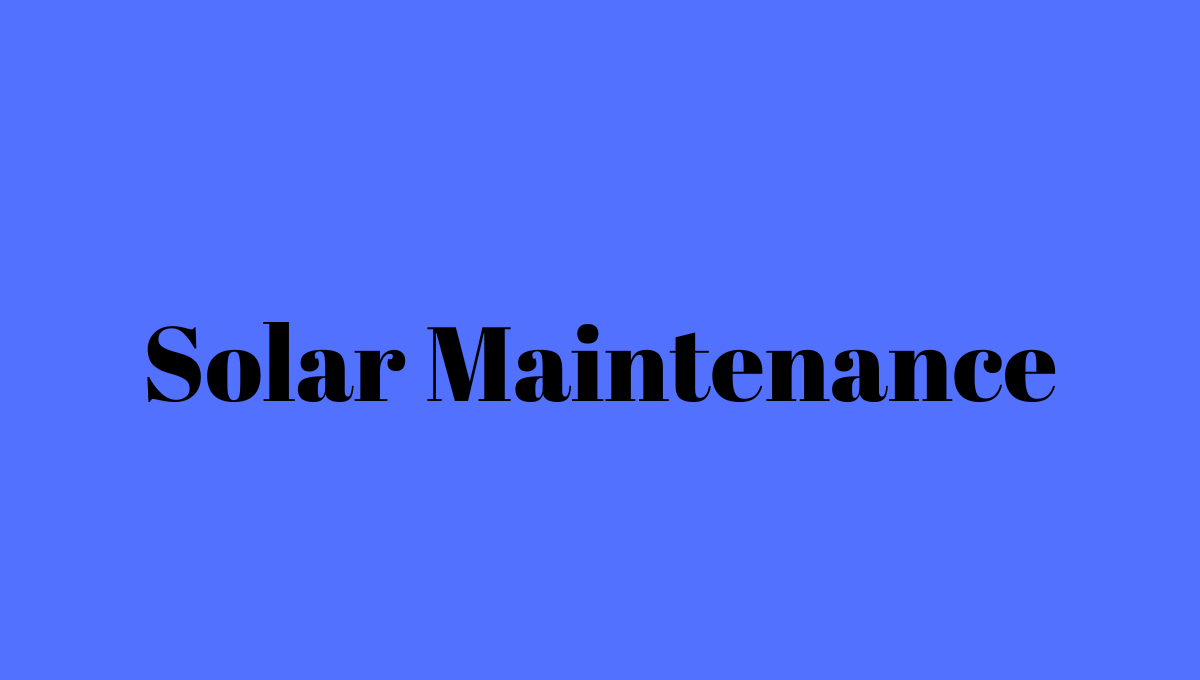There is a need to set up more and more solar systems as more and more companies and people alike move towards using solar. Over time, all these solar systems will indeed need some maintenance to optimize their performance and correct any shortcomings.
Solar maintenance is the way to increasing solar systems’ lifetime as well as effectively handling failures.

What You Get From Solar Operation and Maintenance
Solar O&M companies offer you three things:
Preventative Maintenance
Operation and maintenance can help you anticipate future defects and failures. Routine checks for solar maintenance help you anticipate these failures and effectively reduce a possible system failure.
Perform routine checks on all the components of the solar panel parts including: cables, inverters, the panels, and everything in between.
Performing Monitoring
You can’t really gauge the performance of any resource without having a monitoring mechanism or algorithm in place. This is precisely why you need O&M with details on your system’s performance. There can be real-time remote monitoring, which can help you identify if the system underperforms. This is especially important in large scale solar farms and fully autonomous solar sites.
Depending on how the system is performing, you can then take action accordingly. Taking said action early enough can help you bypass downtime with a loss in performance.
Corrective Maintenance
Corrective maintenance is vital to remedy any failures in the system. It covers diagnoses to system restoration and everything in between. Backup parts may be required to fix the systems, at least temporarily so they remain functional.
Hazards of Solar Operation and Maintenance
There are many risks involved with solar O&M – occupation hazards, literally. Here are some of the risks solar O&M companies employees take everyday as they go about ensuring solar systems are shining their brightest.
Sprains and Strains
Solar O&M’s job description involves lots of carrying and lifting lots of equipment – sometimes solar panels for replacing. The said equipment can be heavy and it stands to reason that it is possible to suffer some sprains and strains when lifting them.
Perhaps have your chiropractor on speed dial with that respect. Depending on where the equipment needs to be moved, you can deploy some emissaries like forklifts and pulley systems to get everything to the level it needs to be on.
Electric Risks
The whole point of solar is producing energy, right? Electrical risks come from the classic short-circuiting and shock from live equipment. The electrical risks are much more electric in large scale fully autonomous solar sites.
These electric risks are mostly in play for solar O&M as opposed to the installation. The reason for this is because in installation, the system doesn’t really have full power through most of the project.
Solar maintenance in latter stages, however, will definitely involve LOTO procedures until the system is fully serviced and back in operation. Include details about all the electrical risks involved while educating your staff so that they know not to try anything unless the system is shut down or a physical barrier is installed.
Another rather nasty risk involved is thermal burns from the solar panels. Solar systems harness energy from the sun ergo they heat up and they heat up quite good.
Whenever solar O&M is scheduled, it is good to remember that solar panels will still produce energy and will still heat up unless covered with an opaque material. Before getting started, ensure all safety procedures are in place as well as personal protective equipment.
Trips and Falls
When you think of solar, you think of rooftop or someplace even higher than the rooftop if there is any. Home installation gets even trickier with the sloped roofs.
Coming up with a one-size-fits-all solution to maintain safety up there is quite the headache. Whatever solution you will get for this very reason should be a solution that works for you and your employees. Also, ensure your staff is well trained on using these solutions.
Solar O&M gets a little easier on flat roofs as is the case in industrial buildings. Your options here include solutions like counterweighted railings and mobile anchor points.
Whatever you choose depends on the configuration of the roof being worked on as well as how much weight it can hold. Improvising on a seemingly-suitable anchor point can be very catastrophic if that’s sadly not the case.